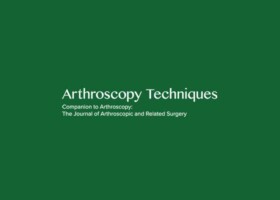
Authors:
Jonas Pogorzelski, Zaamin B Hussain, George F Lebus, Erik M Fritz, Peter J Millett
Abstract:
The shoulder capsule and rotator cuff are the most important static and dynamic stabilizers of the glenohumeral joint. More precisely, anterior glenohumeral stability is maintained by the anterior shoulder capsule and the subscapularis muscle. Concomitant tearing of these structures with progression to irreparable capsular insufficiency is commonly understood as a major contributor to “end-stage” shoulder instability, which can cause devastating functional deficits. It predominantly affects young patients after multiple failed prior instability procedures, especially after previous thermal capsulorrhaphy. In addition, the presence of a hereditary collagen disorder further increases the risk of chronic severe anterior shoulder instability. Patients with prior open shoulder procedures in which the subscapularis muscle is detached may also be at risk.
In general, successful management of these patients is extremely challenging for the surgeon given the inadequate or poor-quality capsular, labral, and rotator cuff tissue, as well as the possible undiagnosed connective tissue disorders that may coexist. In cases in which a repair is not possible, few options remain for the treatment of these patients. Several surgical techniques, both nonanatomic and anatomic, have attempted to reconstruct the anterior glenohumeral capsule and the subscapularis muscle in this context. The results have varying rates of success and may be associated with altered biomechanics, high retear rates, and complications such as nerve injury. Optimal graft choices, techniques for graft placement and fixation, and rehabilitation protocols are all controversial.
The purpose of this article and Video 1 is to describe our preferred surgical technique for anterior capsular reconstruction using a human acellular dermal patch to treat irreparable subscapularis tears; advantages and disadvantages of the technique are outlined in Table 1. The allograft used in this procedure may offer additional benefits such as superior mechanical strength compared with the smaller, thinner tendon allografts used previously. Moreover, in patient groups with generalized tissue laxity or collagen disorders, allografts from nonaffected donors have the additional benefit of avoiding the pathology inherent to the donor’s autograft tissue.
For the complete study: Anterior Capsular Reconstruction for Irreparable Subscapularis Tears
